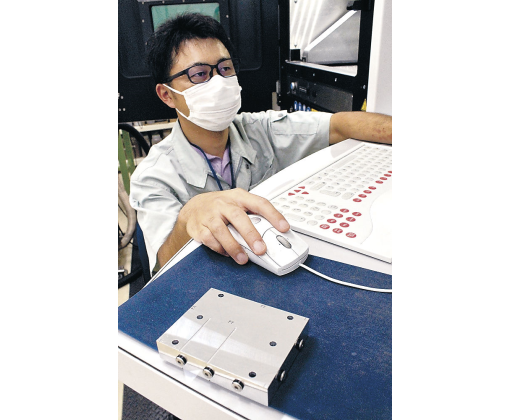
JAXA: Keep the in-flight temperature constant in outer space: Moon surface +120 degrees / -180 degrees
Toyama Prefectural Industrial Technology Research and Development Center (Takaoka City)
Japan Aerospace Exploration Agency (JAXA)
We have developed thermal control equipment for lunar spacecraft and artificial satellites.
Apply for a patent by September 30th.
Developed thermal control equipment:
Using a 3D printer
Achieves both thermal conductivity and lightness
Keep the temperature inside the plane constant in outer space.
There are already inquiries from domestic spacecraft system manufacturers.
Aeronautical Equipment Development and Manufacturing Orbital Engineering (OEI) also participated in the research.
Outer space: lunar temperature
Since outer space has no atmosphere and is directly affected by sunlight, its temperature changes significantly.
The lunar surface temperature changes drastically from 120 degrees to minus 180 degrees day and night.
To keep the temperature inside the spacecraft constant
Blocks heat according to the surrounding environment
Stores heat when it’s cold
The development of thermal control equipment is an important issue.
Development of basic technology:
The Prefectural Industrial Technology Research and Development Center and JAXA have been working on the development of basic technologies such as parts manufacturing since 2016.
Completed thermal control equipment:
The thermal control equipment completed in mid-August
Made of aluminum alloy
8 cm long, 10 cm wide,
A rectangular parallelepiped with a thickness of 2 cm.
Inside is a structure in which thin rods called “fins” are arranged in a complicated manner.
Use by injecting a heat storage material into the space other than the fins.
Mechanism of absorbing heat:
When the heat storage material changes from a solid to a liquid, the ambient temperature is controlled by utilizing the property of absorbing a large amount of heat.
Increasing the number of fins increases the surface area and can absorb heat efficiently.
Use a metal 3D printer:
Integrate fins with a metal 3D printer.
To mold the container, irradiate the aluminum powder with a laser.
Thermal conductivity and weight reduction by adding a unique device to the internal structure.
Prototype (SiSi):
It was named “SiSi (ice in space)” because of its image of efficiently absorbing heat.
SiSi is an abbreviation for “Structure-Integrated Space Ice”.
Northern Toyama Shimbun